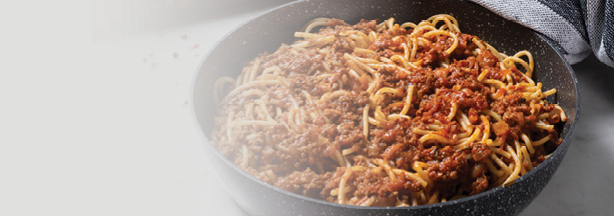Diet Tips for People with Diabetes and Kidney Disease
Diet is one of the most important treatments in managing diabetes and kidney disease. If you’ve been diagnosed with kidney disease as a result of diabetes, you’ll need to work with a dietitian to create an eating plan that’s right for you. This plan will help manage your blood glucose levels and reduce the amount of waste and fluid your kidneys process.
Which nutrients do I need to regulate?
Your dietitian will give you nutritional guidelines that tell you how much protein, fat and carbohydrate you can eat, as well as how much potassium, phosphorus and sodium you can have each day. Because your diet needs to be lower in these minerals, you’ll limit or avoid certain foods, while planning your meals.
Portion control is also important. Talk to your dietitian regarding tips for accurately measuring a serving size. What may be measured as one serving on a regular diet may count as three servings on the kidney diet.
Your doctor and dietitian will also recommend you eat meals and snacks of the same size and calorie/carbohydrate content at certain times of the day to keep your blood glucose at an even level. .It’s important to check blood glucose levels often and share the results with your doctor.
What can I eat?
Below is an example of food choices that are usually recommended on a typical kidney diet for people with diabetes. This list is based on heath value of foods in addition to sodium, potassium, phosphorus and high sugar content of foods included. Ask your dietitian if you can have any of these listed foods and make sure you know what the recommended serving size should be. Some of the foods in the Limit or Avoid lists may be worked into your meal plan based on your dietitian's recommendations.
Carbohydrate Foods
Milk and nondairy
| Recommended | Limit or Avoid |
|---|---|
|
Skim or fat-free milk, non-dairy creamer, plain yogurt, sugar-free yogurt, sugar-free pudding, sugar-free ice cream, sugar-free nondairy frozen desserts* *Portions of dairy products are often limited to 4 ounces due to high protein, potassium or phosphorus content |
Chocolate milk, buttermilk, sweetened yogurt, sugar sweetened pudding, sugar sweetened ice cream, sugar sweetened nondairy frozen desserts |
Breads and starches
| Recommended | Limit or Avoid |
|---|---|
|
White, wheat, rye, sourdough, whole wheat and whole grain bread, unsweetened, refined dry cereals, cream of wheat, grits, malt-o-meal, oatmeal, noodles, white or whole wheat pasta, brown, white or wild rice, bagel (small), hamburger bun, unsalted crackers, cornbread (made from scratch), flour or corn tortilla |
Bran bread, frosted or sugar-coated cereals, instant cereals, bran or granola, gingerbread, pancake mix, cornbread mix, biscuits, salted snacks including: potato chips, corn chips and crackers. Whole wheat cereals like wheat flakes and raisin bran, and whole grain hot cereals contain more phosphorus and potassium than refined products, but may still be included in limited amounts. |
Fruits and juices
| Recommended | Limit or Avoid |
|---|---|
|
Apples, apple juice, applesauce, apricot halves, berries including: strawberries, raspberries, cranberries, blackberries and blueberries, low sugar cranberry juice, cherries, fruit cocktail, grapefruit, grapes, grape juice, kumquats, mandarin oranges, pears, pineapple, plums, tangerine, watermelon, fruit canned in unsweetened juice |
Avocados, bananas, cantaloupe, dried fruits including: dates, raisins and prunes, honeydew melon, kiwis, kumquats, star fruit, papaya, nectarines, oranges and orange juice, pomegranate, fruit canned in syrup |
Starchy vegetables
| Recommended | Limit or Avoid |
|---|---|
|
Corn, peas, mixed vegetables with corn and peas (eat these less often because they are high in phosphorus), potatoes (soaked to reduce potassium, if needed) Dried beans and peas may be included in limited amounts based on your dietitian's recommendations. |
Baked potatoes, sweet potatoes, yams, baked beans, succotash, pumpkin, winter squash |
Non-starchy vegetables
| Recommended | Limit or Avoid |
|---|---|
|
Asparagus, beets, broccoli, Brussels sprouts, carrots, cabbage, cauliflower, celery, cucumber, eggplant, frozen broccoli cuts, green beans, iceberg lettuce, kale, leeks, mustard greens, okra, onions, red and green peppers, radishes, raw spinach (1/2 cup), snow peas, summer squash, turnips |
Artichoke, fresh bamboo shoots, beet greens, cactus, cooked Chinese cabbage, kohlrabi, rutabagas, sauerkraut , cooked spinach, tomatoes, tomato sauce or paste, tomato juice, vegetable juice |
Higher-protein foods
Meats, cheeses and eggs
| Recommended | Limit or Avoid |
|---|---|
|
Lean cuts of meat, poultry, fish and seafood; eggs, low cholesterol egg substitute; natural cheeses (limited amounts) cottage cheese (limited due to high sodium content) |
Bacon, canned and luncheon meats, processed cheeses, hot dogs, organ meats, nuts, pepperoni, salami, salmon, sausage |
Higher-fat foods
Seasoning and calories
| Recommended | Limit or Avoid |
|---|---|
|
Soft or tub margarine low in trans fats, mayonnaise, sour cream, cream cheese, low fat mayonnaise, low fat sour cream, low fat cream cheese |
Bacon fat, back fat, butter, Crisco®, lard, shortening, margarines high in trans fats, whipping cream |
Beverages
| Recommended | Limit or Avoid |
|---|---|
|
Water, diet clear sodas, homemade tea or lemonade sweetened with an low calorie sweetener |
Regular or diet dark colas, beer, fruit juices, fruit-flavored drinks, bottled or canned iced tea or lemonade containing sugar, syrup, or phosphoric acid; tea or lemonade sweetened with sugar |
You may also be instructed to limit or avoid the following sweet and salty foods:
- Candy
- Chocolate Regular sugar
- Syrup
- Honey
- Molasses
- Baked goods
- Ice cream
- Canned foods
- Condiments
- Onion, garlic or table salt
- TV dinners
- Meat tenderizer
- Marinades
- Nuts
- Pizza
- Salted chips and snacks
Once you and your dietitian have worked together to create a meal plan, you can find help managing your diabetic kidney diet with DaVita.com's diet and nutrition tools. You can search more than 1,200 kidney friendly recipes and can even filter your search results by diet type - including "dialysis and diabetes" and "chronic kidney disease (CKD) non-dialysis and diabetes." You can also sort by nutrient content (e.g. low to high potassium, low to high protein, etc.) so that you see more recipes that align with your dietary needs.
Related kidney disease education articles on DaVita.com

Download
Cookbooks
Access free kidney-friendly cookbooks from DaVita dietitians.
1,000,000+ Enjoyed So Far!

Eating Out
Guides
See kidney-friendly food and drink choices to consider when eating out at your favorite restaurants. Choose from 12 cuisine types.
